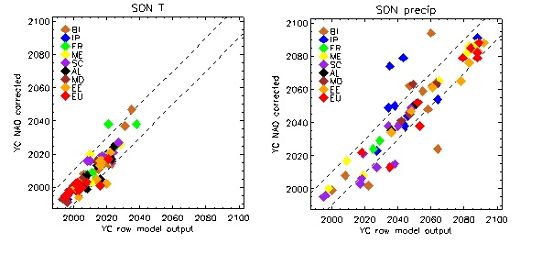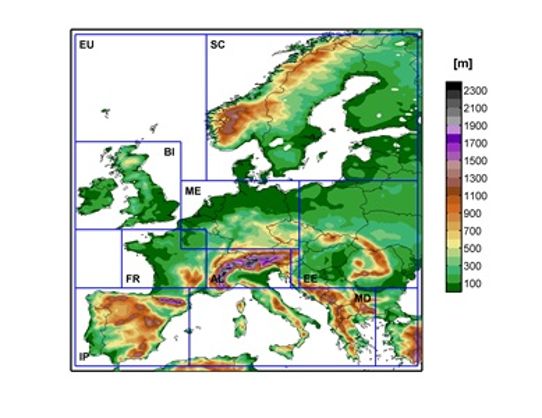In a recent joint study between the Rossby Centre and the Danish Climate Centre (Kjellström et al. 2013) it is shown that a large number of regional climate model (RCM) projections indicate robust emergence of temperature change in Europe already in the first two decades of the 21st century. This implies that the climate change signal seen in these projections is larger than the underlying noise as calculated from the RCM simulated inter-annual variability for the late 20th century. The results typically indicate earlier emergence in summer and later in winter, consistent with the larger natural variability in temperature in winter. As precipitation is much more variable from year to year changes tend to emerge later than those in temperature. In most regions the time lag is about 40-60 years. Exceptions to this include some sub-regions, where robust signals for precipitation are not found within the entire studied period, i.e. until 2100 and some sub-regions where changes can be expected already in a few decades. As an example, the Iberian Peninsula sticks out with no clear signal emerging in winter while decreasing precipitation in summer becomes discernible around 2040. An equally early emergence is seen in Scandinavia, where winter time precipitation is expected to increase.
The influence of the North Atlantic Oscillation (NAO), as simulated in the projections was also investigated. The NAO exerts major influence on the inter-seasonal and inter-annual temperature and precipitation variability in Western Europe (e.g. Hurrell 1995). Unforced NAO variations can both add to and subtract from forced regional climate trends. GCM results indicate that the NAO generally will be more positive with the overall global warming, but the magnitude of the changes is uncertain (Meehl et al. 2007). In the present study, the NAO was removed in a statistical sense from the RCM data. By doing this it could be investigated whether the time of emergence in temperature and precipitation change was altered. It was found that NAO has some influence for the temperature change signals which emerge earlier in winter for some models and regions if NAO was accounted for. For summer, the influence of NAO is less evident. Similarly, for precipitation, accounting for NAO leads to an earlier emergence in some regions and models. Here, we find an impact for both summer and winter. Also in the transition seasons spring and fall there is some impact from accounting for NAO as exemplified for fall in Figure 1.


Another finding of the study is that models showing an early significant change in temperature are more in line with the observations than the ensemble mean. Whether these “earliest” GCM-RCM combinations have more realistic climate sensitivity than the others or if this is a result of natural variability remains an open question.
References
Hurrell JW (1995) Decadal Trends in the North Atlantic Oscillation: Regional Temperatures and Precipitation. Science 269:676-679, doi: 10.1126/science.269.5224.676.
Kjellström, E., Thejll, P., Rummukainen, M., Christensen, J.H., Boberg, F., Christensen, O.B.C., Fox Maule, C., 2012. Emerging regional climate change signals for Europe under varying large-scale circulation conditions. Accepted for publication in Climate Research. doi: 10.3354/cr01146
Meehl GA, Stocker TF, Collins WD, Friedlingstein P, Gaye AT, Gregory JM, Kitoh A, Knutti R, Murphy JM, Noda A, Raper SCB, Watterson IG, Weaver AJ and Zhao Z-C (2007) Global Climate Projections. In: Climate Change 2007: The Physical Science Basis. Contribution of Working Group I to the Fourth Assessment Report of the Intergovernmental Panel on Climate Change [Solomon S, et al. (eds.)]. Cambridge University Press, Cambridge, United Kingdom and New York, NY, USA.